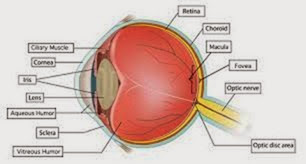keratitis INFLAMMATION of the CORNEA, usually the result of an INFECTION. The cause of the infection is more commonly viral, such as HERPES SIMPLEX or HERPES ZOSTER, than bacterial. Symptoms of infectious keratitis include
• redness and irritation of the EYE and conjunctiva (inner eyelids)
• discomfort or PAIN
• excessive tearing
• difficulty keeping the eye open
• diminished VISUAL ACUITY (usually blurred vision)
• eye discharge or crusting
Viral keratitis usually runs its course without complication, though occasionally a secondary bacterial infection may develop. ANTIVIRAL MEDICA- TIONS sometimes shorten the course of chronic herpes infections. Bacterial keratitis typically follows a CORNEAL INJURY, such as an abrasion or laceration, and requires treatment with ophthalmic ANTIBIOTIC MEDICATIONS. Chronic or recurrent keratitis can cause permanent scarring of the cornea, resulting in diminished visual acuity such as ASTIG- MATISM. Extensive corneal damage may require CORNEAL TRANSPLANTATION.
SUNBURN is the most common cause of noninfectious keratitis. Extended exposure to the sun, especially on or around water, exposes the surface of the eye to the same ultraviolet rays that cause sun- burn of the SKIN. Ultraviolet burns to the cornea are painful; treatment with ophthalmic CORTICOSTEROID MEDICATIONS helps reduce the inflammation.
See also BACTERIA; CONJUNCTIVITIS; EPISCLERITIS; IRITIS; SCLERITIS; SUN PROTECTION; UVEITIS; VIRUS.
keratoconus A degenerative disorder in which the CORNEA thins, allowing it to protrude from the surface of the EYE in somewhat of a cone shape. Keratoconus affects both eyes though often progresses at different rates in each eye. Ophthalmologists do not know what causes keratoconus, though it appears to run in families. Keratoconus is painless though results in progressive VISION IMPAIRMENT, typically in the forms of MYOPIA (near- sightedness) and ASTIGMATISM (distortions of vision resulting from the irregular surface of the cornea). As these REFRACTIVE ERRORS are the primary symptoms, the keratoconus may not become apparent until the coning becomes obvious.
Treatment for mild to moderate keratoconus is rigid gas-permeable contact lenses, which correct the refractive errors of vision as well as help contain the shape of the cornea. As the keratoconus progresses, however, contact lenses become less effective, and the thinned cornea may not be able to tolerate them. Keratoconus ultimately destroys the cornea and is a leading reason for CORNEAL TRANSPLANTATION, which replaces the diseased cornea with a donor cornea. Corneal transplantation successfully restores vision in about 90 per- cent of people who have keratoconus and undergo the procedure.
In 2004 the US Food and Drug Administration (FDA) approved a new treatment for keratoconus, corneal inserts, which are tiny plastic rings the ophthalmologist implants along the edge of the cornea. The corneal inserts flatten the cornea, reducing the coning. Corneal inserts come in different thicknesses to allow less or more flattening and are replaceable.
See also CORNEAL INJURY; CORRECTIVE LENSES

